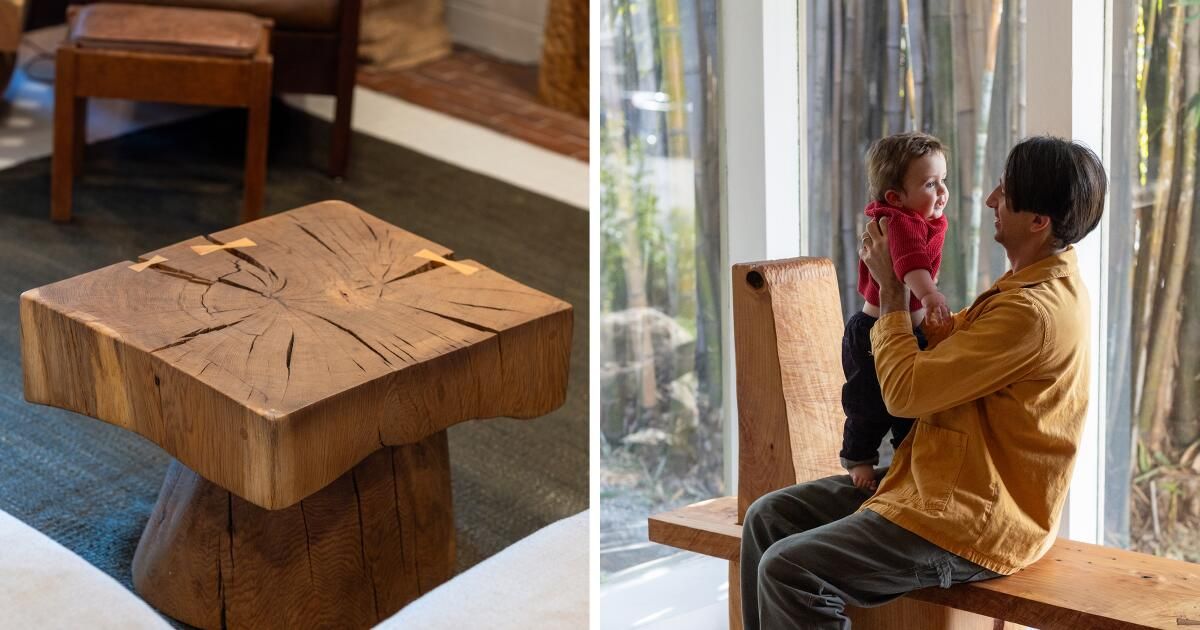Walking through the garden of the designer and sculptor Vince Skelly The Claremont House is a different local sensory experience. After a decade living in Portland, Oregon, “I just want feel like Southern California,” he says as he brushes a palm over a sage plant, releasing its aroma. Since his return in 2021, the self-taught artist has been expanding his practice and fostering a connection with his hometown, colloquially nicknamed “the city of trees and doctorates.”
Skelly's foray into wood sculpture began in 2017, when after spending his days tethered to a screen as a graphic designer, he fired up power tools in his Portland garage. He began by exploring “the limitations of what I can carry in my car and [using] A chainsaw and tools. “That led me to the vocabulary of shapes that I am known for.”
Learning about legendary carpenters like George Nakashima and JB Blunk in particular, featured in the 2010 book “Modern handmade.,”was revealing. “I was surprised that he did all that with a chainsaw because his sculptures seemed so refined: these abstract shapes of redwood and cypress,” Skelly says of Blunk. “A chainsaw is a very aggressive tool, and using it in a thoughtful and considered way to create shapes intrigued me.” Then, reducing the use of other analog devices produces nuances and details.
Furniture made by Vince Skelly.
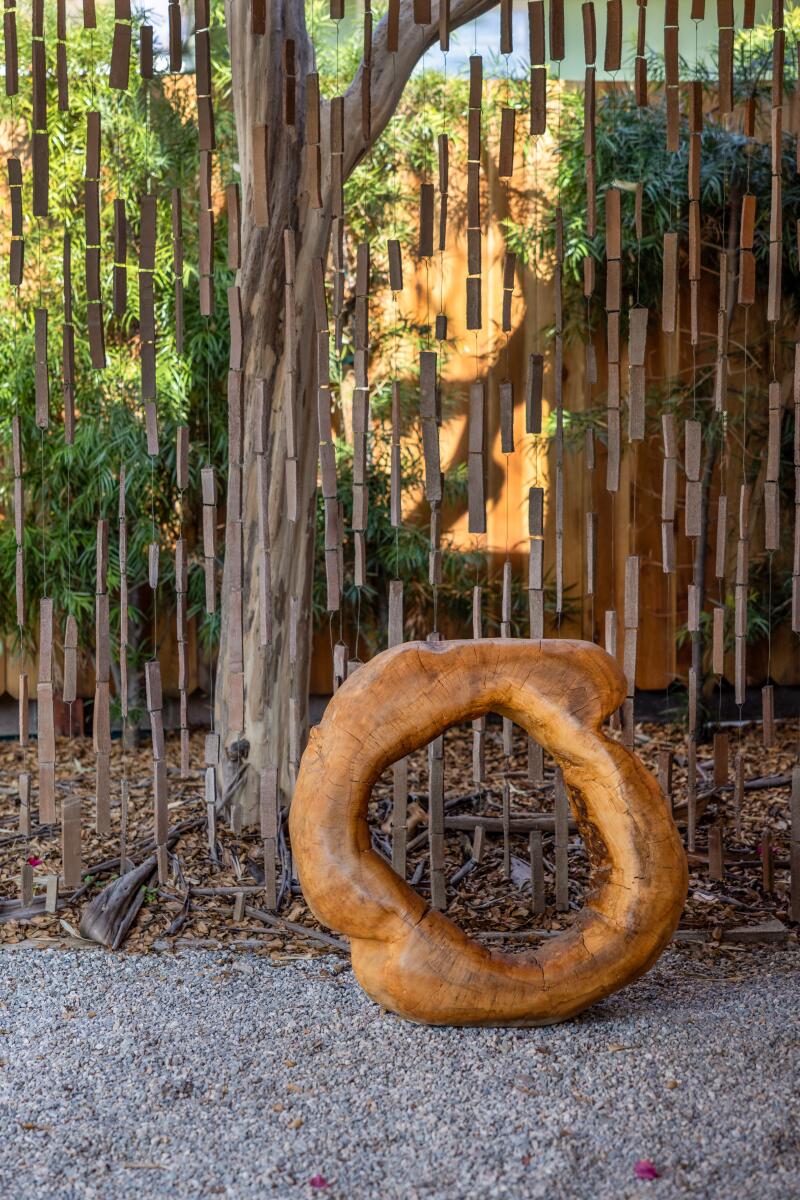
Artwork done by Vince Skelly.
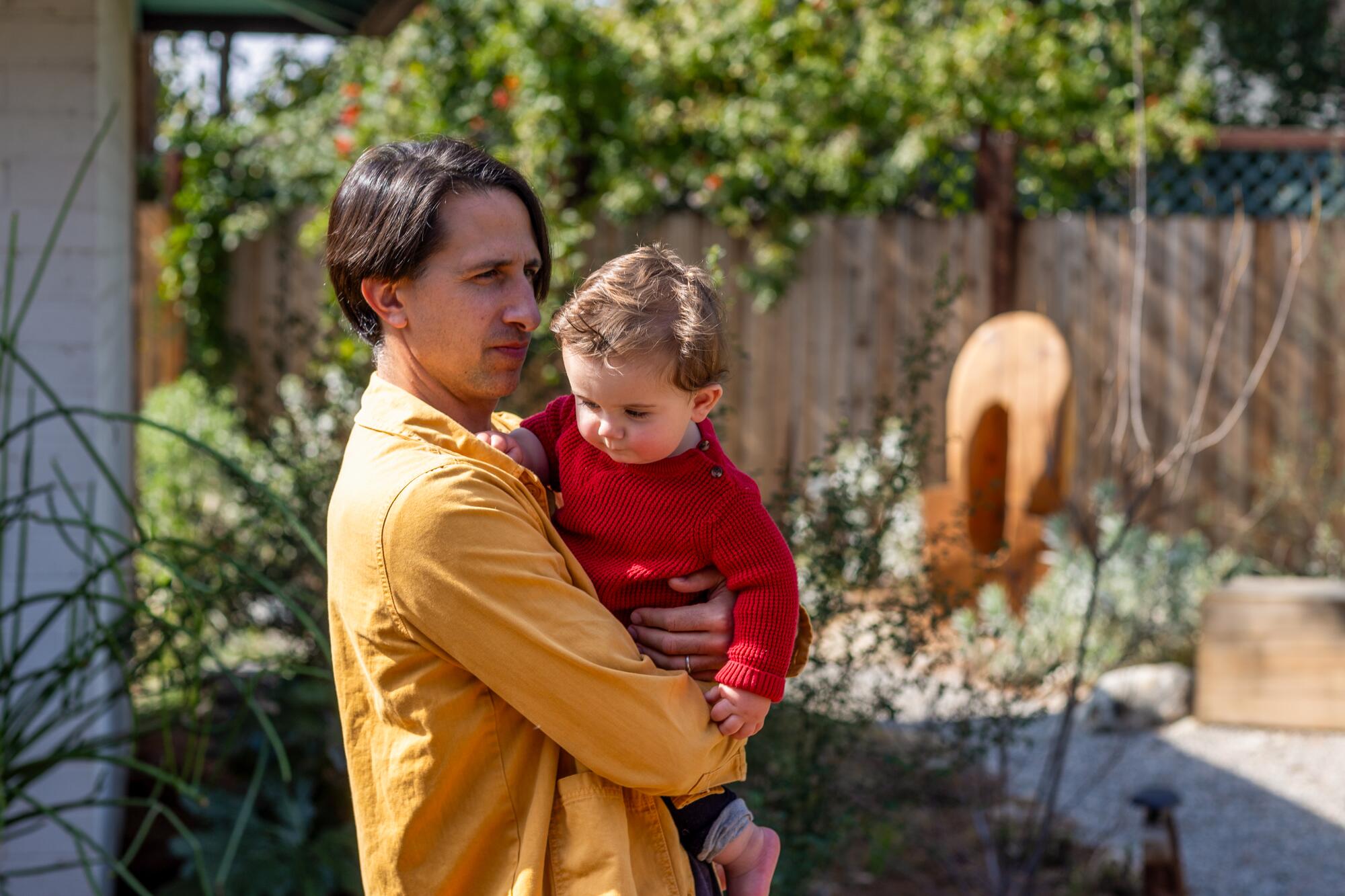
Vince Skelly holds his 10-month-old son, James Barron Skelly, in the backyard of the family home.
Within a few years, he was already contributing ideas and accepting commissions for Off-white Virgil Abloh, brand founder and artistic director of menswear at LVMH, via DM. The largest prototype project It didn't fully come to fruition as planned before Abloh's death in November 2021, but these exchanges “made me realize that it's great to dream big and take risks.” Skelly's Estate Its recent installation at the Burberry store on Rodeo Drive is another sign that the fashion world appreciates its point of view.
Some details change, but the central challenge remains: namely, how to take raw wood and apply “the least amount of modifications to turn it into a finished piece.”
Benches, chairs, stools, tables and sculptures combine functional and decorative purposes. Waxed and unstained logs retain their intrinsic qualities but are transformed in ways that honor their origins. The smooth surfaces of the benches sit on enormous rounded bases, and the smaller tactile sculptures are the result of Skelly's reductive process. Human intervention is evident but humiliated by a certain primary resonance.
Like the production of its heroes, no two pieces are identical. However, what he describes as “an index” has evolved for customers who want sculptural furniture that preserves the imperfections and quirks of nature, but not the comfort of plopping down on the couch. For much of his work, Skelly sources specific wood with the end product in mind, knowing that each project will take on its own character.
Minimizing waste is a key precept. “I have a hard time throwing away debris,” he says, laughing about the shards and wedges that litter the edges of his backyard and the floor of his nearby studio in La Verne. He reuses cutouts in smaller experiments, including rhythmic, polychromatic wall-mounted pieces that hang in his own home; one sits atop the white oak mantel that he hand-chiseled.
“Using found wood to dictate new forms” remains a generative exercise, especially when preparing exhibitions with curator and gallerist Alex Tieghi-Walker of Select Tiwawho organizedAfter the storm” in Los Angeles in 2022, which showed pieces made from salvageable debris from that year's windstorm. What Skelly will present with Tiwa Select later this year in New York City doesn't have an “end customer, so I can do whatever I want,” he explains.
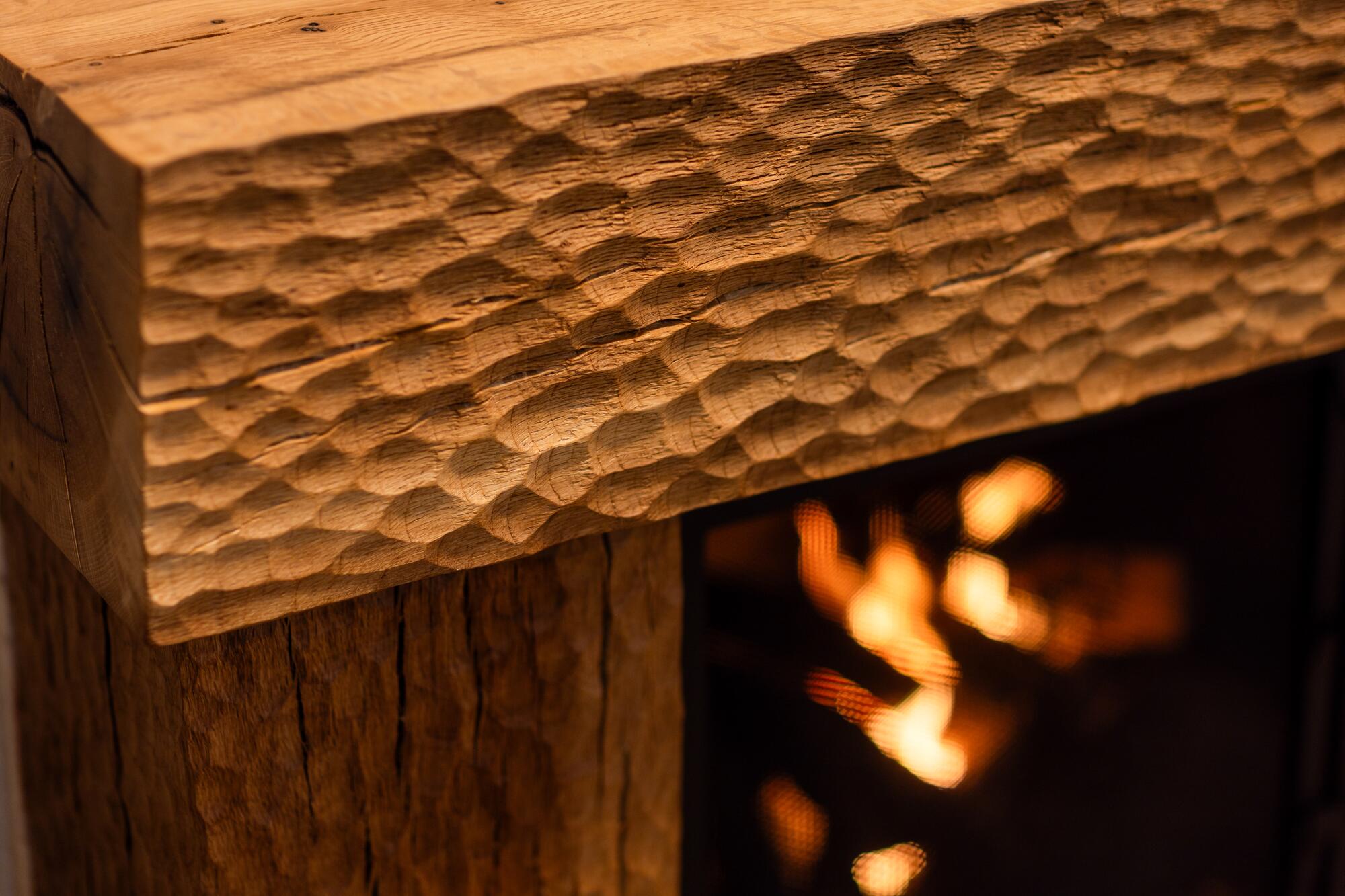
Detail of a fireplace mantel made by Vince Skelly.
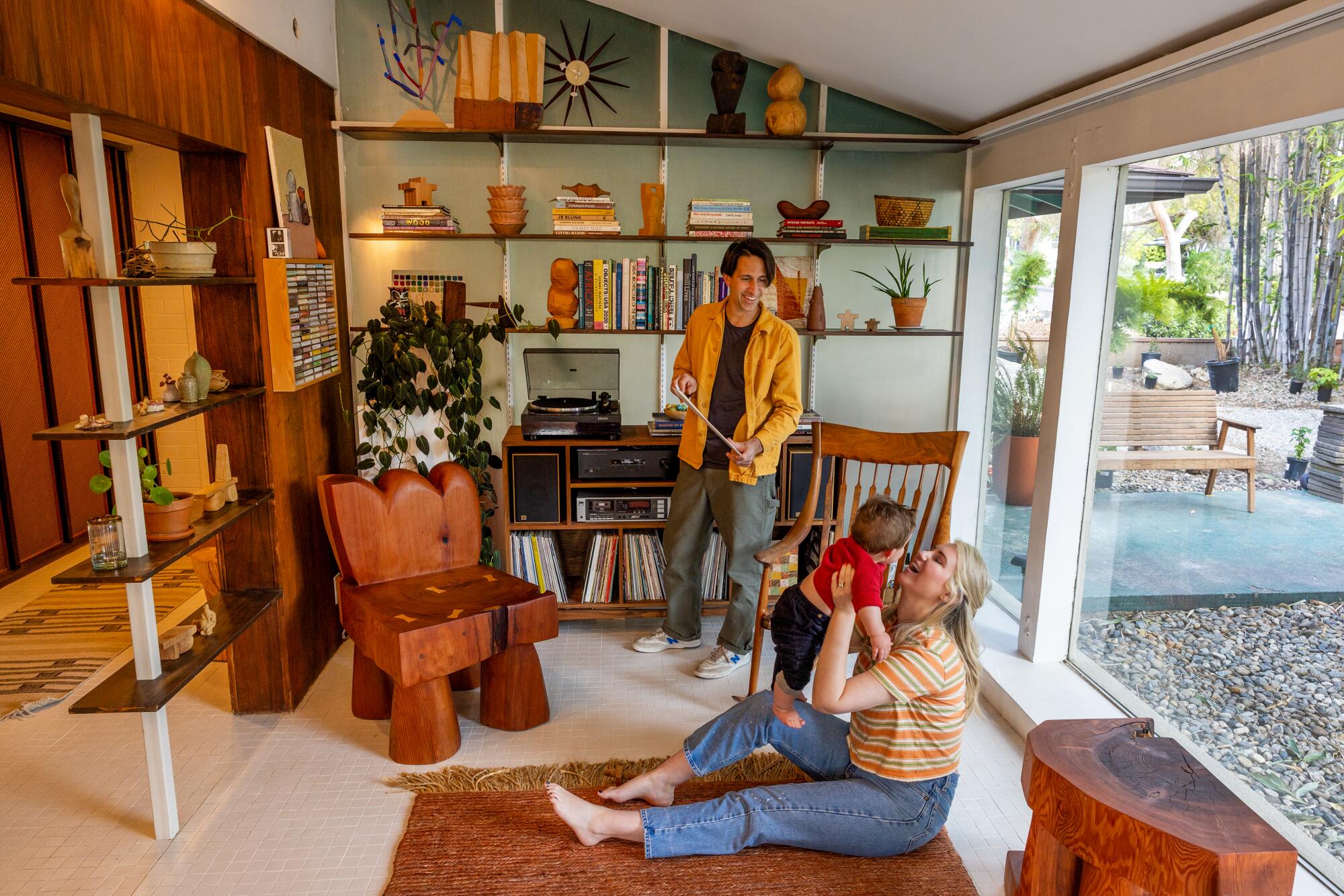
Vince Skelly receives a record from his collection while his wife, Jessica Barron Skelly, plays with the couple's 10-month-old son, James Barron Skelly, on the floor of their Claremont home.
The sensitively renovated house where he lives with his wife Jessica and their young son is a laboratory for living with these objects. Until now, the presence of a crawling baby has caused only minimal adjustments and aesthetic intrusions.
Rather than functioning as austere pieces, Skelly's creations blend into this cozy home environment filled with earthy colors and personal treasures, including a beloved rocking chair inspired by the Claremont-adjacent master craftsman. Sam Maloof that Jessica's father crafted in the 1970s. It is an ideal piece to accompany the site-specific daybed that Skelly created to better enjoy the view from the large sunroom windows, where dappled light filters in. through an exterior screen of imposing bamboos.
The Skellys are proud stewards of the mid-century property that houses a convergence of Claremont's heritage. While waiting for the right house to appear to plan their return, they were excited to hear about the former's modest two-bedroom home. California Botanical Garden director, author and teacher Lee Lenz. In the late 1950s, what was achieved botanical and the preservationist became the second homeowner specific to an unrealized development of concrete masonry residences on a cul-de-sac.
Lenz lived on the property within sight of his workplace until his death in 2019 at the age of 104. Over the decades, this corner lot became a site for the scientist to apply his expertise, establishing a fantastical and idiosyncratic sanctuary populated with extensive plantations. . It is also a stone's throw from the studio of the noted mosaic artist and architectural designer. Millard Sheets (now home of Claremont Eye Associates).
Given Claremont's close-knit community, Skelly assumes Lenz and Sheets knew each other. The turquoise mosaics that lined the concrete platforms in the garden, for example, perhaps came from a surplus from Sheets' workshop. The inspiration felt immediate.
“It is a visual city [with] a lot of art. We walked out the back door and were on the campuses, climbing the sculptures and looking at the Millard Sheets mosaics,” Skelly remembers. “I grew up going to [California Botanic] Garden – then fast forward to this house.”
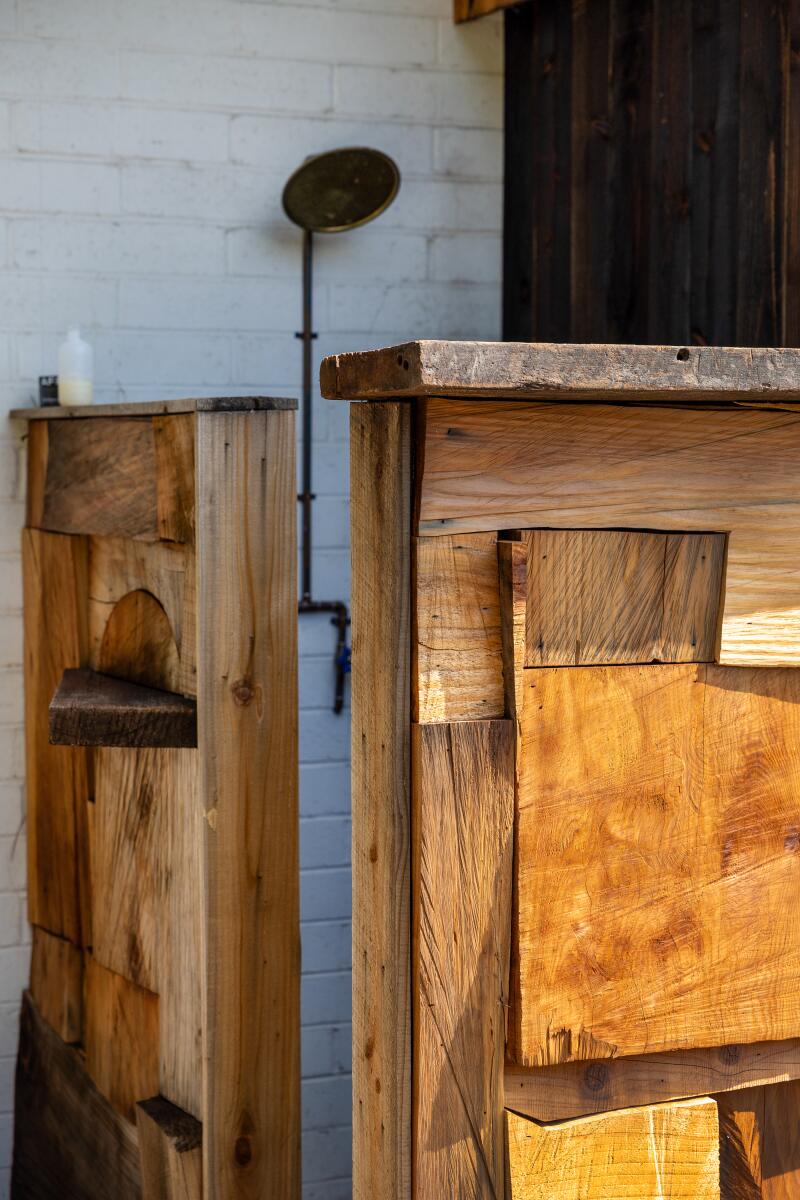
Detail of an outdoor shower with wooden mosaic made by Vince Skelly.
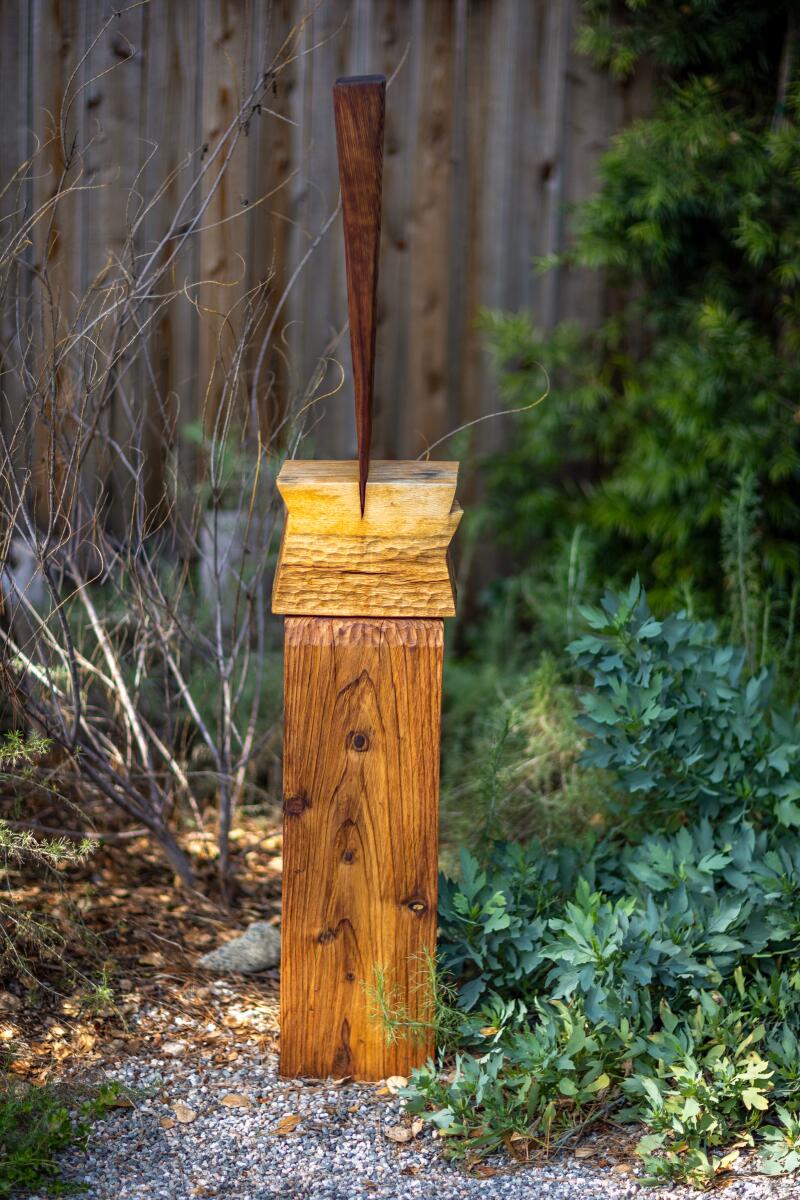
Detail of native backyard plants and outdoor artwork by Vince Skelly.
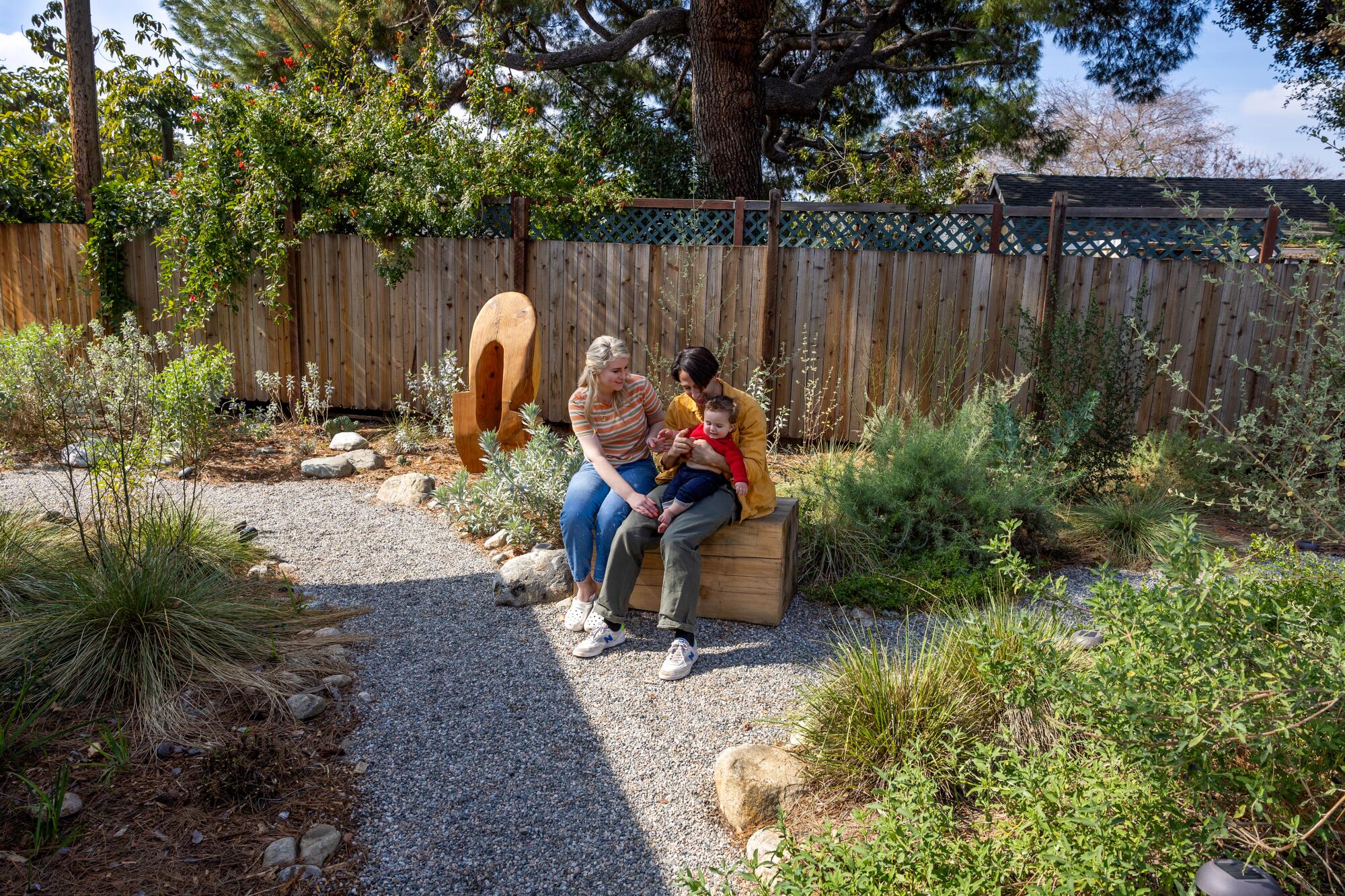
Vince Skelly and his family sit outside on the backyard, where handmade artwork and native plants decorate the space designed by design studio Terremoto.
Reimagining the backyard in collaboration with David Godshall of a leading landscape design firm Earthquake At the same time, it pays tribute to Lenz and reflects a vision for this young family. Native California plants, landscape additions, and meandering paths provide a perfect backdrop for Skelly's exterior works.
Skelly dismantled Lenz's old redwood birdcages and repurposed them into a platform. He also installed an original outdoor shower adorned with a “wood mosaic,” a sly reference to Sheets. Many more remains remain for possible future use.
His personal and professional lives are inexorably linked to the city where Skelly's artist parents originally moved to attend school at Claremont Graduate University. He is eager to make his mark through a public art commission that involves producing a bench from another victim of the 2022 windstorm and developing more sculptural seats carved from found material with students as part of a pilot program in Pomona College.
“We know how special it is because of people like Millard Sheets and Sam Maloof, who left their marks on the public art and architecture scene,” Claremont reflects. Being outside of Los Angeles has other advantages as well. “It's more accessible to do the things you want to do in a small town.”

